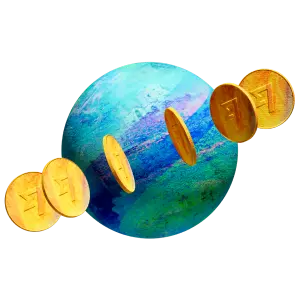Đô-la Canada (CAD)
Đồng đô-la Canada là đồng tiền chính thức của Canada. Đây là đồng tiền dự trữ phổ biến thứ 5 thế giới. Mã tiền tệ của đồng đô-la Canada là CAD với ký hiệu là $. Đồng tiền này được phát hành bởi Ngân hàng Canada và được in bởi công ty Canadian Bank Note Company ở Ottawa. Đồng đô-la Canada là một đồng tiền pháp định.
Tên loại tiền tệ
Đô-la Canada
Ký hiệu tiền tệ
C$
Tỷ giá chuyển đổi CAD
| USD | INR | EUR | GBP | PKR | AUD | CNY | PHP | |
|---|---|---|---|---|---|---|---|---|
| Từ CAD | 0.69211 | 59.35810 | 0.67140 | 0.55717 | 192.68400 | 1.11317 | 5.06731 | 40.23980 |
| Đến CAD | 1.44485 | 0.01685 | 1.48942 | 1.79479 | 0.00519 | 0.89833 | 0.19734 | 0.02485 |
Hãy cẩn thận với tỷ giá chuyển đổi bất hợp lý.Ngân hàng và các nhà cung cấp dịch vụ truyền thống thường có phụ phí mà họ tính cho bạn bằng cách áp dụng chênh lệch cho tỷ giá chuyển đổi. Công nghệ thông minh của chúng tôi giúp chúng tôi làm việc hiệu quả hơn – đảm bảo bạn có một tỷ giá hợp lý. Luôn luôn là vậy.
| Tên | Đô-la Canada (CAD) |
|---|---|
| Symbol | C$ |
| Minor Unit | Cent (1/100 of a Dollar) |
| Minor Unit Symbol | ¢ |
| Notes Freq Used | $5, $10, $20, $50, $100 |
| Coins Freq Used | 1¢, 5¢, 10¢, 25¢, $1, $2 |
| Central Bank | Bank of Canada |
| Users | Canada |
Facts Table for Đô-la Canada (CAD)
The CAD ranks fifth among the most actively traded currencies in the Forex market, attracting significant interest from both institutions and individuals. Commonly nicknamed the Loonie, Buck, Huard, and Piastre (in French), the Canadian Dollar holds the status of a reserve currency within several central banks. Its recognition as a commodity currency stems from Canada's significant exports of raw materials.
Cultural Symbolism
Adorned with national icons and significant imagery, Canadian banknotes portray the nation's natural beauty, historic figures, and indigenous heritage. Each note tells a story, reflecting Canada's diverse cultural tapestry and natural landscapes.
Oversight by the Bank of Canada
The stability and value of the Canadian Dollar are overseen by the Bank of Canada. The advent of currency in Canada traces back to the early 1660s, when French settlers arrived, introducing coins to the region. The initial issuance of banknotes occurred in 1821 through the Montreal Bank, swiftly gaining prominence as a primary mode of transaction.
In 1841, as the Province of Canada under British rule, a currency known as the Canadian Pound was introduced. However, by 1858, the Canadian Dollar replaced the Pound, aligning its value with the US Dollar. During this transition, both US Dollars and British Gold Sovereigns were accepted as legal tender within Canada's boundaries.
Following Canadian Confederation, the government initiated the decimalization of the currency, issuing a new set of coins in the Dominion of Canada. The establishment of the Bank of Canada in 1934 marked the inception of banknotes, introduced a year later. Notably, the inaugural Loonie coin entered circulation in 1987, followed by the introduction of the two-dollar coin, commonly referred to as the Toonie, in 1996. A significant development occurred in 2011 when the Central Bank of Canada launched a novel series of banknotes printed on polymer material.
